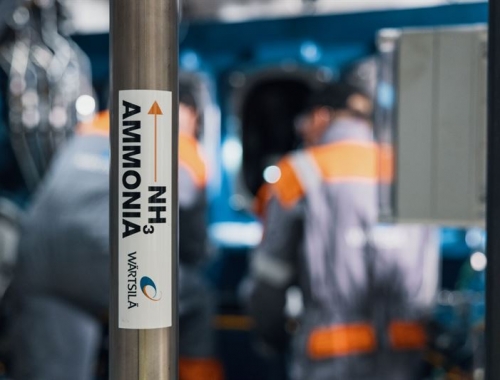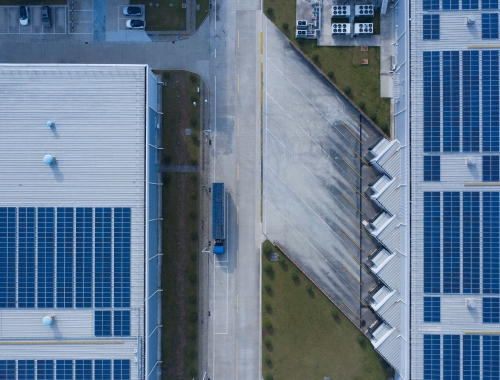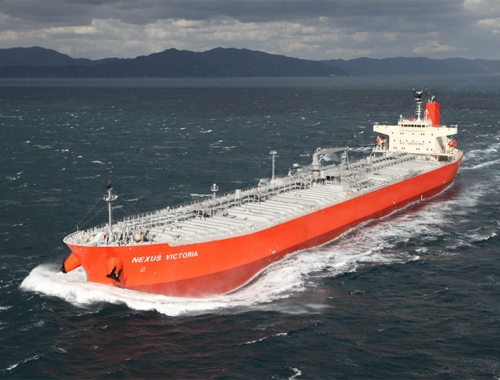Shipping's decarbonisation push spurs interest in onboard carbon capture
SUMMARY
It's rare for shipowners to invest in assets they believe are unnecessary. A changing market and regulatory environment however has led many to revisit onboard carbon capture systems.
By Vincent WeeShipowners and charterers previously saw onboard carbon capture as being an unnecessary and cumbersome investment, but changes in market dynamics and the regulatory environment have made them revisit it.
The interest that shipping is taking in capturing carbon in the first place is due to several factors. Prime among these is the increasing urgency of the need for the industry to decarbonise and the resulting policies and regulations that have arisen because of that.
Carbon capture, the active part of the broader technology known as carbon capture and storage (CCS), involves the prevention of carbon dioxide produced in the combustion process from entering the environment.
In the shipping context, this means the capture necessarily needs to take place on board the vessel as this is where the gas is produced as fuel is burnt to produce power from the engines and other ancillary equipment. As well, the captured CO2 needs to be stored on board until it can be taken off the vessel at some appropriate facility.
This means extra equipment needs to be fitted, which will cost more and also use more power, increasing both capital expenditure and operating expenditure for owners and operators.
The trade-off is that it offers an option to help reduce CO2 emissions as well as improve the vessel's carbon intensity indicator (CII) rating.
Coming into effect this year, the CII rates a vessel on how efficiently it transports goods or passengers in terms of grams of CO2 emitted per cargo-carrying capacity and nautical mile.
According to a recent American Bureau of Shipping report, apart from improvements on the fuel consumption side, carbon capture is an essential element to enable the industry to reach the international Maritime Organisation's goal of net-zero emissions by 2050.
ABS noted that with conventional single fuel-powered vessels continuing to be constructed until well into the next decade, the widespread adoption and retrofitting of carbon capture and energy-saving technologies will be needed to meet the goals.
The report pointed out that rolling out carbon capture across most of the conventional fuel oil burning fleet will be able to reduce onboard carbon dioxide emissions by 70%.
Another report by Lloyd's Register notes that the adoption of onboard carbon capture systems is dependent on its economic feasibility and the formation of viable economic cases for each player in the supply chain.
"The maritime industry needs decarbonisation solutions that reduce emissions in the short to mid-term, and carbon capture can be a transitional tool for operators and owners to do this," said LR Maritime Decarbonisation Hub director Charles Haskell.
This sentiment has been echoed by DNV as well. DNV Gas Carriers and FSRUs global segment director Martin Cartwright presented the results of a joint industry project with SK Shipping, Marubeni, Hyundai Heavy Industries and TotalEnergies which looked at the various business cases for the adoption of onboard carbon capture. The project found that while capex, fuel prices, carbon taxes and the efficiency of the system are all important factors in making a business case, the last factor is key to its successful adoption.
Specifically, increased capture rates and system performance improve the business case while high operating and offloading costs detract from it. An offloading cost of around $80/tonne was seen as the breakeven point for CCS to work. The study concluded that the case for onboard CCS systems is positive for selected LNG carrier newbuilds as a retrofit around 2030, due to the combination of regulatory and business conditions.
These figures however will also be affected by factors such as carbon tax policy. For example, Cartwright suggested that the EU’s emissions trading scheme, which will include shipping from 2024, will play a part in determining the price at which CCS installation becomes feasible.
As these additional costs start to kick in, he predicts that it will be the end-users that will be forced to help pay for the cost of installing the systems and that these moves will take place within a year of the scheme coming into effect.
CO2 transport
While the installation of onboard CCS systems is still nascent, the offtake side of the equation has been moving along at a much faster pace. There are now a string of projects for carbon storage as well as for liquefied CO2 carriers and the supporting infrastructure that will enable the transportation of the gas as cargo and sets the stage for its potential commoditisation.
Rystad Energy forecasts that CO2 shipments will amount to more than 90m tby the end of the decade.
Norway's often-cited Western Europe industrial-focussed Northern Lights Project is set in 2024 to be the first open-source CO2 transport and storage network.
This project is the furthest along the development path, with tankers and infrastructure being built on track for its scheduled deployment.
Jumping on the bandwagon, Norwegian compatriots Aker BP and Hoegh LNG are following in quick succession with plans for a similar development by 2030.
In the Asia-Pacific region, Australia is expected to play a big role, taking in CO2 from domestic projects as well as neighbouring Asia-Pacific countries, including Japan, Malaysia and South Korea.
Asian players are also active in the market. Malaysia's Petronas has tied up with Mitsui & Co and TotalEnergies on a project in Malaysia, in addition to its own projects.
Southeast Asia's two other big national oil companies, Thailand's PTT Exploration and Production (PTTEP) and Indonesia's Pertamina are also working on their own projects.
PTTEP is developing a project with Petronas and Japan's Inpex on a 1m t/yr project by 2027 while Pertamina is working on various projects with foreign partners including ExxonMobil to make use of numerous depleted oil and gas fields in Indonesia's waters for carbon storage.
Meanwhile, in the US, a range of projects are also being planned, mainly on the Gulf Coast.
Almost all of these projects are however geared towards industrial users and shipping players may find that with their relatively smaller volumes and more onerous offtake requirements, they may not be among the preferred customers.
In addition, as the sector ramps up, the capacity needed to ship these volumes is expected to significantly lag demand.
LR Global Gas Segment director Panos Mitrou said firm steps towards ordering of liquefied CO2 carriers could take up to five years, possibly resulting in gaps between shipping supply and demand as the fleet struggles to keep pace with liquefaction capacity projections.
Despite a host of concept designs from shipyards and approvals from classification societies, the only firm orders have been those tied to the Northern Lights project.
Neither promising to produce zero emissions nor provide an alternative to fossil fuels, onboard carbon capture has been seen as unnecessary, expensive and ineffective by shipowners. Changing conditions however are reigniting interest as the so-called interim solution comes under renewed consideration.








